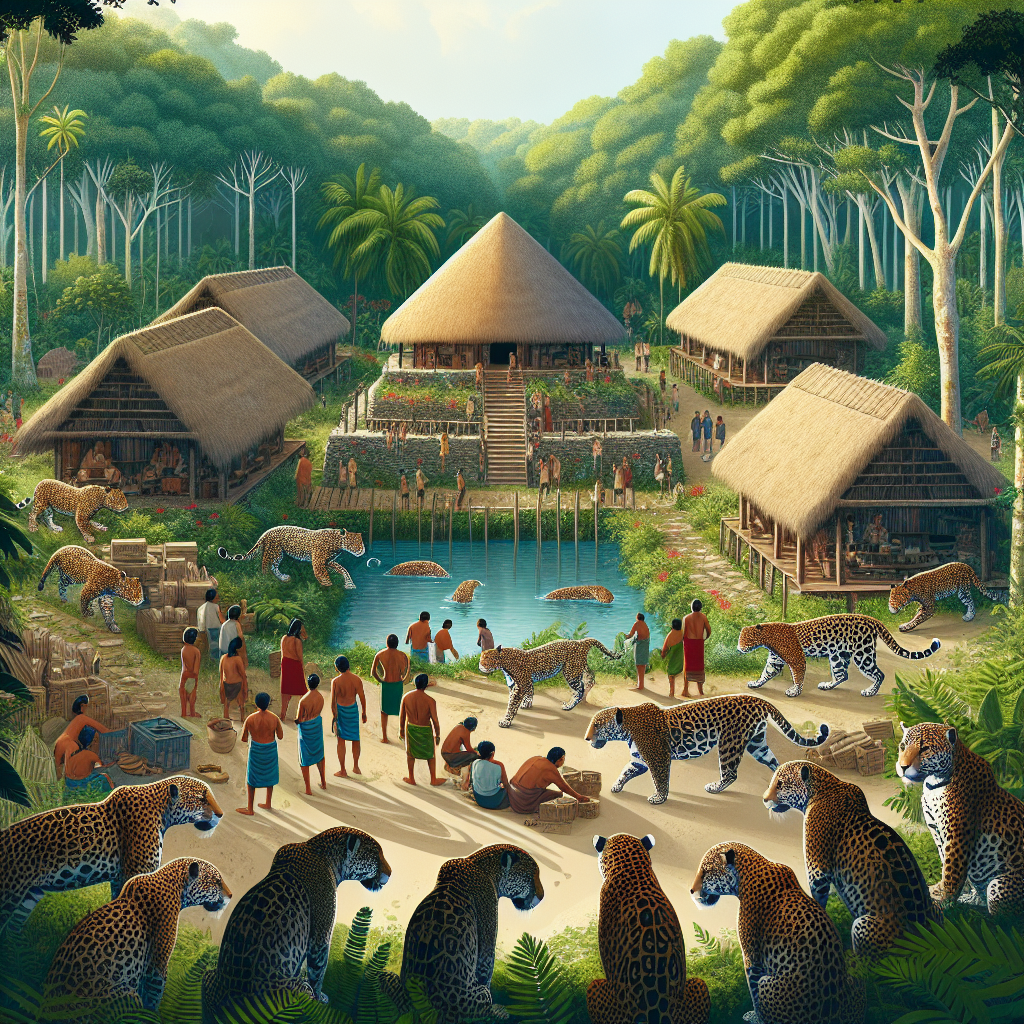Impactful Community Projects Fueling Jaguar Rehabilitation in Tulum
The Significance of Jaguars in Tulum
Jaguars (Panthera onca) are critical to the ecosystem of Tulum and the broader Yucatan Peninsula. As apex predators, they maintain the health of the environment by controlling prey populations. Protecting these majestic creatures not only ensures biodiversity but also retains the balance of the ecosystems in which they thrive. As iconic symbols of strength and cultural heritage, jaguars have been revered in Mayan culture, underscoring the need for conservation efforts that align with local traditions.
Conservation Initiatives Driven by Local Communities
Community-driven conservation initiatives are at the forefront of jaguar rehabilitation in Tulum. These projects involve the collaboration of local residents, NGOs, and governmental organizations, forming a robust network aimed at safeguarding habitats and educating stakeholders.
-
Jaguar Tracks Conservation Program
Developed as a grassroots approach, the Jaguar Tracks Conservation Program focuses on preserving wildlife corridors that allow jaguars to roam freely. Local communities are engaged through workshops to map out critical wildlife paths which are then integrated into land-use planning. This project has successfully reduced human-jaguar conflicts and increased awareness about the ecological importance of these corridors. - Protecting Critical Habitats
Integrated into the conservation program is the initiative to protect the natural habitats where jaguars hunt and breed. The areas surrounding Tulum, including the Sian Ka’an Biosphere Reserve, are integral to jaguar populations. Local volunteers participate in reforestation efforts and habitat restoration activities, planting native trees and removing invasive species. Such efforts enhance biodiversity, creating healthier ecosystems for the jaguars.
Educational Programs on Jaguar Conservation
Education plays a pivotal role in fostering community support for jaguar protection. Various programs are aimed at schools, local businesses, and adult education initiatives.
-
School Outreach Programs
The “Jaguars in the Classroom” initiative connects students with environmental scientists, providing interactive lessons on jaguar behavior, habitat, and conservation. Engaging activities often include field trips to respected conservation sites, allowing students firsthand experiences with wildlife. This grassroots effort helps instill a sense of stewardship among younger generations, ensuring future champions for jaguar conservation. - Workshops for Local Businesses
Recognizing the reliance of the local economy on tourism, tailored workshops educate local business owners about sustainable tourism practices that promote jaguar conservation. By illustrating how a thriving population of jaguars can significantly boost ecotourism, businesses are encouraged to adopt practices that protect the species, transforming potential threats into economic opportunities.
Community Patrols: Guardians of the Wild
A significant aspect of the conservation efforts is the establishment of community patrols. These groups are formed from local volunteers among residents, ensuring that both the community and wildlife are protected.
-
Anti-Poaching Initiatives
Community patrols actively monitor protected areas, reporting illegal activities such as poaching or habitat encroachment. Through regular patrols, local communities take ownership of wildlife protection. This initiative has led to a decrease in poaching incidents, as the presence of vigilant community members discourages illegal hunting activities. - Wildlife Monitoring
Community patrols also engage in wildlife monitoring, using camera traps to collect data on jaguar populations, their health, and their behavior. This information is vital for researchers and conservationists, allowing them to make informed decisions about further conservation measures.
Cultural and Ecotourism Initiatives
To foster a strong cultural connection to jaguar conservation, local organizations have tapped into the region’s rich Mayan heritage.
-
Cultural Festivals Celebrating Jaguars
Annual cultural festivals celebrate the jaguar’s significance within Mayan history. These festivals promote local art, crafts, and traditions related to the jaguar, fostering pride in the community while educating visitors about conservation efforts. This integration of culture and conservation works to cultivate greater sensitivity and understanding about the issues facing jaguars among tourists, incentivizing conservation-minded travel attitudes. - Sustainable Ecotourism Practices
Community-led lodges offer eco-friendly accommodations and guided tours focused on jaguar tracking. These tours not only provide employment for locals but also attract tourists willing to invest in the conservation of the local wildlife. The profits generated are often reinvested into conservation projects, creating a self-sustaining model for jaguar protection.
Collaborations with NGOs and Governmental Bodies
Collaboration with non-governmental organizations and governmental institutions has been essential in scaling local efforts.
-
Partnerships with Conservation NGOs
NGOs such as Panthera and the Wildlife Conservation Society have partnered with local communities, providing technical expertise, funding, and resources. Workshops run by these organizations equip community members with the tools necessary to manage and understand the dynamics of jaguar populations and their habitats. - Government Support and Policy Advocacy
Local governments are increasingly recognizing the importance of jaguar conservation, advocating for policies that protect the species and their habitats. This includes establishing legal protections for critical habitats and funding local conservation initiatives. The alignment of government policies with community action has strengthened the efficacy of rehabilitation efforts.
Community Resilience through Involvement
The active involvement of Tulum’s residents provides a pathway not only for jaguar rehabilitation but also fosters a sense of community resilience. Through education and engagement, community members develop relationships with their environment, ensuring they act as effective stewards of the jaguar population.
-
Community Empowerment Initiatives
Empowerment comes through training in leadership and project management, allowing community leaders to drive conservation efforts forward. As they take charge of local initiatives, they inspire others within their community, becoming role models for sustainability. - Long-term Economic Benefits
By prioritizing jaguar conservation, Tulum’s community has begun to witness long-term economic benefits resulting from eco-tourism. As awareness grows, so does the demand for responsible travel options focused on wildlife experiences, allowing for a sustainable economic model that benefits the entire community.
Conclusion
The synergy between impactful community projects, educational initiatives, and collaborative efforts has forged a hopeful future for jaguars in Tulum. Through these dedicated actions, communities not only protect their jaguar populations but also reinvent their local environments and economies. Future trajectories of jaguar conservation in Tulum will continue to hinge on community involvement, fostering an ecosystem where wildlife and people flourish together sustainably.







